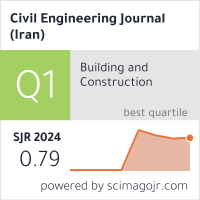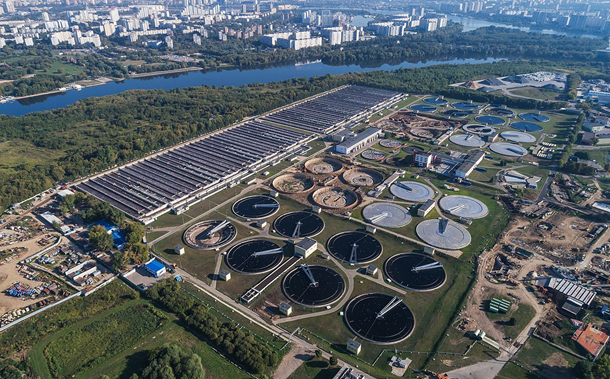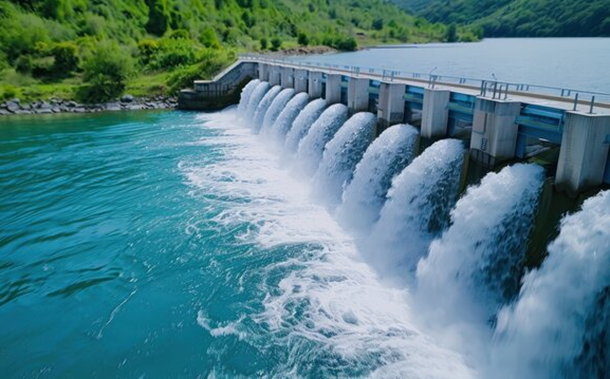Pulsed-Bed Column Adsorption for Triclosan Removal Using Macadamia Nut Shell Activated Carbon
Downloads
Doi:10.28991/CEJ-2024-010-05-019
Full Text:PDF
Downloads
[2] Zhang, Q., Kroeze, C., Cui, S., Li, Y., Ma, L., Strokal, V., Vriend, P., Wang, M., van Wijnen, J., Xu, W., Zhang, F., & Strokal, M. (2024). COVID-19 estimated to have increased plastics, diclofenac, and triclosan pollution in more than half of urban rivers worldwide. Cell Reports Sustainability, 1(2023), 100001. doi:10.1016/j.crsus.2023.100001.
[3] Milanović, M., Äurić, L., MiloŠ¡ević, N., & Milić, N. (2023). Comprehensive insight into triclosan”from widespread occurrence to health outcomes. Environmental Science and Pollution Research, 30(10), 25119–25140. doi:10.1007/s11356-021-17273-0.
[4] Dar, O. I., Aslam, R., Pan, D., Sharma, S., Andotra, M., Kaur, A., Jia, A. Q., & Faggio, C. (2022). Source, bioaccumulation, degradability and toxicity of triclosan in aquatic environments: A review. Environmental Technology & Innovation, 25. doi:10.1016/j.eti.2021.102122.
[5] Sinicropi, M. S., Iacopetta, D., Ceramella, J., Catalano, A., Mariconda, A., Pellegrino, M., Saturnino, C., Longo, P., & Aquaro, S. (2022). Triclosan: A Small Molecule with Controversial Roles. Antibiotics, 11(6), 735. doi:10.3390/antibiotics11060735.
[6] JabŠ‚ońska-Trypuć, A. (2023). A review on triclosan in wastewater: Mechanism of action, resistance phenomenon, environmental risks, and sustainable removal techniques. Water Environment Research, 95(9). doi:10.1002/wer.10920.
[7] Lee, J. S., Lee, J. S., & Kim, H. S. (2024). Toxic effects of triclosan in aquatic organisms: A review focusing on single and combined exposure of environmental conditions and pollutants. Science of the Total Environment, 920. doi:10.1016/j.scitotenv.2024.170902.
[8] Li, L. (2021). Toxicity evaluation and by-products identification of triclosan ozonation and chlorination. Chemosphere, 263. doi:10.1016/j.chemosphere.2020.128223.
[9] Phuekphong, A. F., Imwiset, K. J., & Ogawa, M. (2020). Organically Modified Bentonite as an Efficient and Reusable Adsorbent for Triclosan Removal from Water. Langmuir, 36(31), 9025–9034. doi:10.1021/acs.langmuir.0c00407.
[10] Medellin-Castillo, N. A., González-Fernández, L. A., Ocampo-Pérez, R., Leyva-Ramos, R., Luiz-Dotto, G., Ramírez, R. F., Navarro-Frómeta, A. E., Aguilera-Flores, M. M., Carrasco-Marín, F., Hernández-Mendoza, H., & Aguirre-Contreras, S. (2022). Removal of triclosan from water by adsorption on activated carbons and photodegradation. Research Square (Preprint), 1-46. doi:10.21203/rs.3.rs-1440179/v1.
[11] Duque-Brito, E., Lobato-Peralta, D. R., Okolie, J. A., Arias, D. M., Sebastian, P. J., & Okoye, P. U. (2024). Fast-kinetics adsorption of a binary solution containing cationic and ionic pollutants using high-surface area activated carbon derived from macadamia nutshell. Energy, Ecology and Environment, 9(1), 84–99. doi:10.1007/s40974-023-00304-6.
[12] Wongcharee, S., Aravinthan, V., Erdei, L., & Sanongraj, W. (2018). Mesoporous activated carbon prepared from macadamia nut shell waste by carbon dioxide activation: Comparative characterisation and study of methylene blue removal from aqueous solution. Asia-Pacific Journal of Chemical Engineering, 13(2). doi:10.1002/apj.2179.
[13] Machedi, S., Ejidike, I. P., Mtunzi, F. M., Pakade, V. E., & Klink, M. J. (2019). Chlorinated Phenols Sorption Performance by Macadamia Activated Carbon and Grafted Macadamia Activated Carbon: Characterization, Kinetics, and Thermodynamic studies. Oriental Journal of Chemistry, 35(5), 1469–1479. doi:10.13005/ojc/350501.
[14] Al Mesfer, M. K., Danish, M., Khan, M. I., Ali, I. H., Hasan, M., & Jery, A. El. (2020). Continuous fixed bed co2 adsorption: Breakthrough, column efficiency, mass transfer zone. Processes, 8(10), 1233. doi:10.3390/pr8101233.
[15] AL-Doury, M. M. I., & Alwan, M. H. (2021). Phenol Removal from Synthetic Wastewater by Adsorption Column. IOP Conference Series: Materials Science and Engineering, 1058(1), 012034. doi:10.1088/1757-899x/1058/1/012034.
[16] Sazali, N., Harun, Z., & Sazali, N. (2020). A review on batch and column adsorption of various adsorbent towards the removal of heavy metal. Journal of Advanced Research in Fluid Mechanics and Thermal Sciences, 67(2), 66–88.
[17] Patel, H. (2019). Fixed-bed column adsorption study: a comprehensive review. Applied Water Science, 9(3), 45. doi:10.1007/s13201-019-0927-7.
[18] Plangklang, C., & Sookkumnerd, T. (2023). Modelling and feedforward control of pulsed bed adsorption column for colorant removal in sugar syrup. Engineering Journal, 27(1), 29–38. doi:10.4186/ej.2023.27.1.29.
[19] Wyllie, G. R. A. (2015). Spectroscopic determination of triclosan concentration in a series of antibacterial soaps: A first-year undergraduate laboratory experiment. Journal of Chemical Education, 92(1), 153–156. doi:10.1021/ed5004146.
[20] Kaur, I., Gaba, S., Kaur, S., Kumar, R., & Chawla, J. (2018). Spectrophotometric determination of triclosan based on diazotization reaction: Response surface optimization using box-behnken design. Water Science & Technology, 77(9), 2204–2212. doi:10.2166/wst.2018.123.
[21] Khader, E. H., Khudhur, R. H., Abbood, N. S., & Albayati, T. M. (2023). Decolourisation of Anionic Azo Dye in Industrial Wastewater Using Adsorption Process: Investigating Operating Parameters. Environmental Processes, 10(2), 34. doi:10.1007/s40710-023-00646-7.
[22] Karthika, M., & Vasuki, M. (2021). Comparative Study of Adsorption of Different Dyes from Aqueous Media onto Physically Activated Carbon: Isotherm, Kinetic and Thermodynamic Parameter. International Journal of Applied Engineering, 16(6), 441–446.
[23] Ndagijimana, P., Liu, X., Li, Z., Yu, G., & Wang, Y. (2020). The synthesis strategy to enhance the performance and cyclic utilization of granulated activated carbon-based sorbent for bisphenol A and triclosan removal. Environmental Science and Pollution Research, 27(13), 15758–15771. doi:10.1007/s11356-020-08095-7.
[24] Sun, K., Li, S., Waigi, M. G., & Huang, Q. (2018). Nano-MnO2-mediated transformation of triclosan with humic molecules present: kinetics, products, and pathways. Environmental Science and Pollution Research, 25(15), 14416–14425. doi:10.1007/s11356-018-1637-7.
[25] Sultana, M., Rownok, M. H., Sabrin, M., Rahaman, M. H., & Alam, S. M. N. (2022). A review on experimental chemically modified activated carbon to enhance dye and heavy metals adsorption. Cleaner Engineering and Technology, 6. doi:10.1016/j.clet.2021.100382.
[26] Vidovix, T. B., Januário, E. F. D., Araújo, M. F., Bergamasco, R., & Vieira, A. M. S. (2022). Investigation of two new low-cost adsorbents functionalized with magnetic nanoparticles for the efficient removal of triclosan and a synthetic mixture. Environmental Science and Pollution Research, 29(31), 46813–46829. doi:10.1007/s11356-022-19187-x.
[27] Triwiswara, M., Lee, C. G., Moon, J. K., & Park, S. J. (2020). Adsorption of triclosan from aqueous solution onto char derived from palm kernel shell. Desalination and Water Treatment, 177, 71–79. doi:10.5004/dwt.2020.24872.
[28] Rodrigues, L. A., De Sousa Ribeiro, L. A., Thim, G. P., Ferreira, R. R., Alvarez-Mendez, M. O., & Coutinho, A. D. R. (2013). Activated carbon derived from macadamia nut shells: An effective adsorbent for phenol removal. Journal of Porous Materials, 20(4), 619–627. doi:10.1007/s10934-012-9635-5.
[29] Dan, S., & Chattree, A. (2021). Influence of modifiers on point of zero charge (pHPZC) of PMMA modified and PMMA-PEG modified MnFe2O4 nanoparticles. International Journal of New Innovations in Engineering and Technology. 17(2), 25-29.
[30] Alvarez-Garciá, S., MacEdo-Miranda, G., Martínez-Gallegos, S., Ordoñez-Regíl, E., López-Castillo, J., & Aguirre-Miranda, E. (2020). Removal of triclosan by CTAB-modified zeolite-rich tuff from aqueous solutions. MRS Advances, 5, 3257–3264. doi:10.1557/adv.2020.394.
[31] Li, Q., Huang, L., Zhu, P., Zhong, M., & Xu, S. (2023). Rapid adsorption of triclosan and p-chloro-m-xylenol by nitrogen-doped magnetic porous carbon. Environmental Science and Pollution Research, 30(1), 1640–1655. doi:10.1007/s11356-022-22084-y.
[32] Kaur, H., Bansiwal, A., Hippargi, G., & Pophali, G. R. (2018). Effect of hydrophobicity of pharmaceuticals and personal care products for adsorption on activated carbon: Adsorption isotherms, kinetics and mechanism. Environmental Science and Pollution Research, 25(21), 20473–20485. doi:10.1007/s11356-017-0054-7.
[33] Almeida-Naranjo, C. E., Cuestas, J., Guerrero, V. H., & Villamar-Ayala, C. A. (2024). Efficient Decontamination: Caffeine/Triclosan Removal using Rice Husk in Batch and Fixed-Bed Columns. Water (Switzerland), 16(2), 197. doi:10.3390/w16020197.
[34] Patel, H. (2020). Batch and continuous fixed bed adsorption of heavy metals removal using activated charcoal from neem (Azadirachta Indica) leaf powder. Scientific Reports, 10(1), 16895. doi:10.1038/s41598-020-72583-6.
[35] Thrikkykkal, H., Antu, R., & Harikumar, P. S. (2023). Remediation of Pb (II), Cd (II), and Zn (II) from aqueous solutions using porous (styrene–divinylbenzene)/Cu–Ni bimetallic nanocomposite microspheres: continuous fixed-bed column study. Water Science and Technology, 87(9), 2277–2291. doi:10.2166/wst.2023.101.
[36] Li, Y., Gong, F., Yang, W., & Liu, B. (2023). Effective triclosan removal by using porous aromatic frameworks in continuous fixed-bed column studies. Environmental Science and Pollution Research, 30(57), 121007–121013. doi:10.1007/s11356-023-30714-2.
- Authors retain all copyrights. It is noticeable that authors will not be forced to sign any copyright transfer agreements.
- This work (including HTML and PDF Files) is licensed under a Creative Commons Attribution 4.0 International License.![]()















